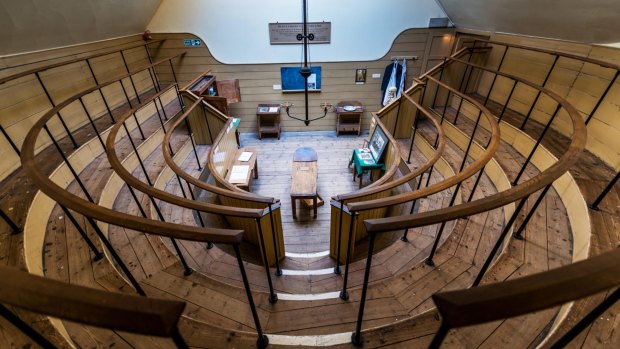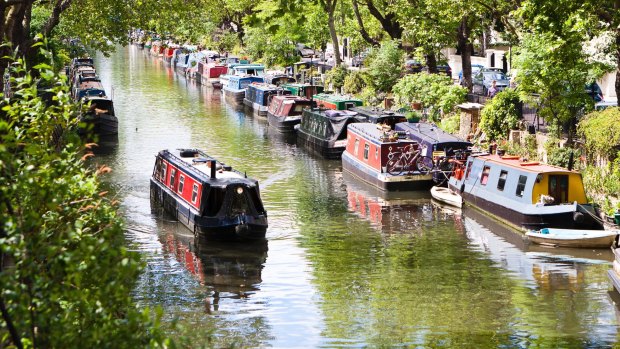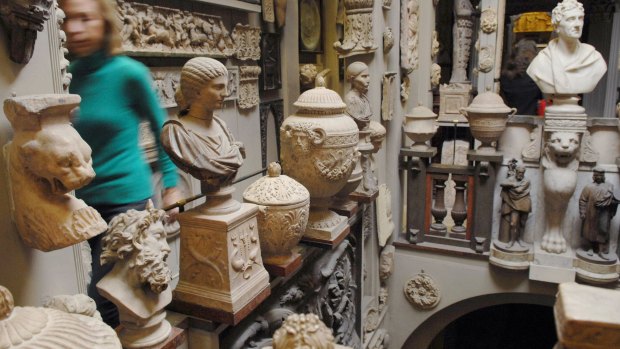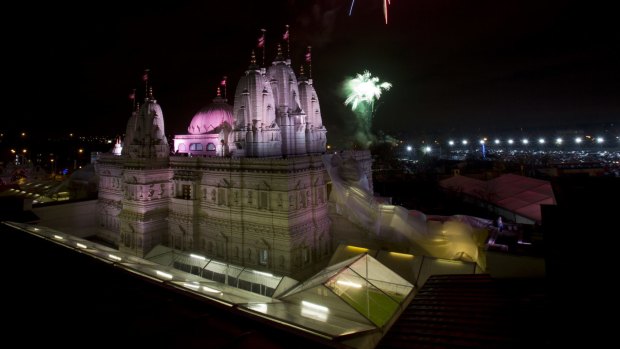By David Whitley
Ticked off the Tower of London? Ridden the Millennium Eye? Perused the Palace? Well, there's plenty more to see, much of which is cruelly ignored by all but the most intrepid visitor.
The Old Operating Theatre

Credit: Alamy
Ridiculously and unashamedly grisly, the Old Operating Theatre delves into the world of 18th and 19th century surgery. Although, quite frankly, it looks like a collection of torture instruments. It's a place to go to if you want to feel really rather lucky that you're living now rather than then.
The shudder-inducing metal implements are complemented by displays going into horrible tales of disgusting diseases and life-threatening operations carried out without anaesthetic.
The Alexander Fleming Laboratory Museum
Continuing on the medical theme, inside St Mary's Hospital near Paddington Station, is the laboratory where Alexander Fleming discovered penicillin. The lab, and the rooms surrounding it, have now been turned into a small museum that tells the story of the world's most famous antibiotic.
The Alexander Fleming Laboratory Museum goes into the happy accident of the discovery – essentially, a petri dish left exposed to outside contamination – how Fleming's efforts were essentially ignored for years, and then how penicillin was rolled out at lightning speed during World War II when other scientific teams realised what the practical uses could be.
The canals

Credit: iStock
Everyone knows about the Thames, but stumbling across London’s other waterways often comes as a pleasant surprise. There’s a network of canals around the city, with the Regent’s Canal (above) the best introduction to them. It stretches for 13.8 kilometres across the north of the city – and most of it can be walked alongside. It quickly switches between urban energy and bouts of semi-rural charm, while the London Canal Museum in Kings Cross tells the story of how and why the network was built.
Postman's Park
Tucked between churches in the City of London, Postman's Park is more of a lunch break escape than a tourist attraction. But within it is the frankly wonderful Memorial To Heroic Self-Sacrifice. Put in by Victorian artist George Frederic Watts, it is essentially a big covered bench decorated with tiles, each of which tells an intriguing story. That may be of a stewardess who did her duty and went down with her ship, a fireman who rescued six from a burning building or a bystander who saved a boy from drowning in the Thames, only to drown himself.
Sir John Soane's Museum

Credit: Bloomberg
We’re used to museums being presented in a certain way, trying to tell stories and themes. Sir John Soane’s Museum, however, looks like an eccentric old man’s cluttered house with antique furniture, overflowing bookcases, pendulum clocks and centuries-old vases battling for attention.
It gets even more bizarre further inside, as all manner of marble statues, column fragments and pilfered stonework from ancient Rome take up every available bit of floor space. And then there's the Picture Room, where hugely important artworks by the likes of Hogarth and Canaletto are squeezed onto walls that open out to reveal even more paintings.
The Bank of England Museum
Soane was an architect, and one of his most famous works was the Bank of England (although it has since been extensively remodelled and rebuilt). At the back entrance to the Bank is a small museum, that while not exactly setting the world alight with old banknotes and coins, gets the brain thinking elsewhere. Dry economics about controlling inflation and other such concepts are made accessible, while the efforts needed to make banknotes forgery proof are unexpectedly fascinating.
There’s also some good trivia in the Bank of England Museum – for example, who knew that Kenneth Grahame, author of Wind In The Willows, was a bank secretary who survived an assassination attempt inside the building?
The Thames Barrier
Among the unreconstructed dockland areas to the east, the Thames Barrier is an oddly compelling, sleek-looking flood defence system designed to stop tidal surges flooding London. The world’s largest moveable flood barrier is a great engineering project of concrete piers, hydraulic machinery and gates that can rise up from the river bed.
The neighbouring Thames Barrier Information Centre gives more detail on how it works, but it also acts as a history of the Thames and London. It covers everything from the first wooden bridge erected under Roman occupation to the oxygen that's pumped in on hot days to keep fish alive.
Novelty Automation
Classic end-of-the-pier arcade machines are given a bizarre twist at this tiny labour of love. So you can test your nerve by putting your hand in a cage with a (mechanised) mad dog, get a going over from an Autofrisk Machine with robotic hands or spin a wheel to see whether a little lamb ends up as a cartoon family’s pet, or meat. Novelty Automation is deeply odd, all home-made and rather endearing.
The Neasden Temple

Credit: AP
Officially known as the BAPS Shri Swaminarayan Mandir, the Neasden Temple is a surprisingly lavish Hindu temple, constructed using traditional means and materials, and absolutely swathed in decoration. Self-funded by the local Hindu community, it is a grand treasure trove of wood and stone carvings inside. The tours, run by members of the local community, are enthusiastically eye-opening too.
The British Library
The British Library tends to play second fiddle to the British Museum – but the Treasures Collection inside offers a compelling reason to visit. There are some extraordinary books and documents inside, ranging from an original Magna Carta to one of Leonardo da Vinci’s notebooks and a letter from Galileo. Centuries-old Bibles, the oldest dated printed book in the world and the original musical score to Handel’s Messiah can also be found in this glorious time-suck of an archive.
David Whitley travelled as a guest of Visit Britain (www.visitbritain.com).
Sign up for the Traveller Deals newsletter
Get exclusive travel deals delivered straight to your inbox. Sign up now.